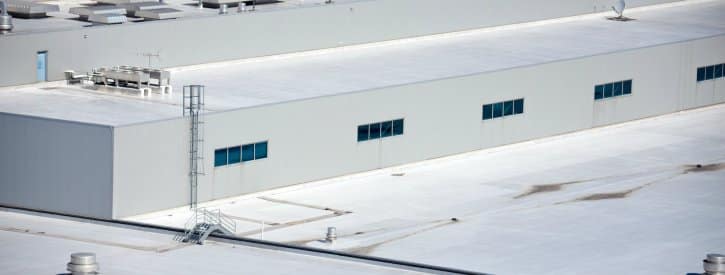
The roof is one of the biggest investments you’ll make for your building. The longer it lasts, the better your return on investment. There are three critical steps to increase the length of a roof’s life. From the way it is built to the way it is maintained, one key to roof longevity is to prevent or fix small problems before they become larger, more costly issues. But the most important step to get the most out of a roof comes down to your contractor.
- Build the Right Roof with the Right Materials
A building’s location and occupancy weigh heavily on decisions regarding design and raw materials. Choosing the right materials, installation methods, and add-ons based on the climate and purpose of the building ensure that the roof can withstand what it will inevitably be put through. For example:
- Weather: TPO and EPDM degrade at different rates in intense sunlight. A roof in a bright climate needs to be made of a material that can withstand the UV.
- Purpose: A built-up roof might be the best choice for roofs with heavy foot traffic. If the building’s purpose means maintenance crews will regularly be on the roof, it should be built to withstand that additional wear and tear.
- Installation: The intensity and strength of regional winds could require a roof to be mechanically attached instead of fully adhered.
One of the benefits of working with a great contractor is that they can act as a partner in planning, but the building’s owners or managers should pay particular attention to the forethought that goes into designing a roof that can meet their needs.
- Plan Ahead: Inspect, Maintain, and Train
A good maintenance plan can mean the difference between needing a partial re-roof or a full replacement. A meticulous, thorough plan for inspection and maintenance increases the chance of catching a small issue before it escalates and causes unnecessary damage.
These plans should include seasonal maintenance, as well as basic precautions like clearing debris and keeping drainage points unobstructed. But the strategy should also extend to building personnel. It is crucial to keep everyone off the roof who doesn’t have an immediate need to be there, and those who are granted access should be trained and held accountable with a system of signing in and signing out.
- Pick the Right Partner — a Roof is Only as Good as Your Contractor
No matter how good the design, raw materials, or maintenance plan, if the contractors fail to install the roof correctly, it will degrade over time – possibly more quickly than it should have.
Building owners and managers need to understand the difference between cheap and economical. Reputable craftsmen who have direct experience with the materials that the job requires may cost more upfront, but their work will pay dividends in the form of long-term value.
Working with a trustworthy, experienced partner is the single most important step a building owner can take to extend the life of the roof system. Coupled with regular inspections and maintenance, as well as thorough training and monitoring of those who have access to the roof, you’re less likely to encounter preventable problems and early on-set damage – which means a better return on your investment – and fewer issues.
